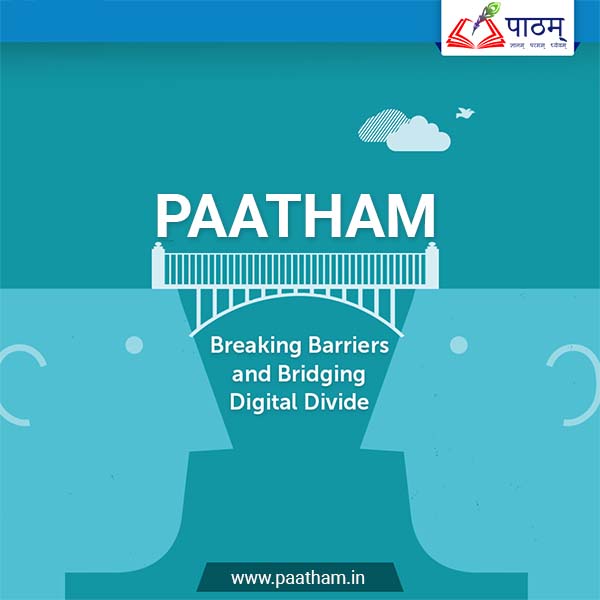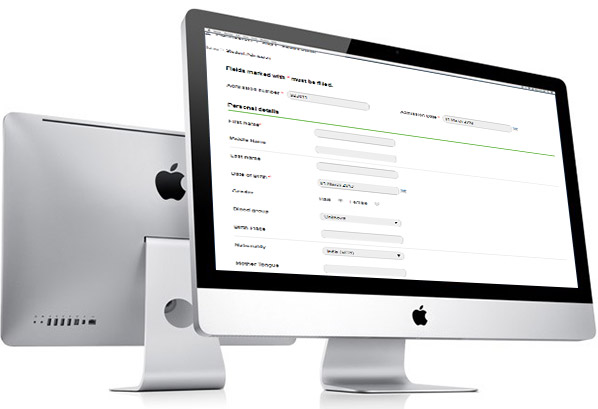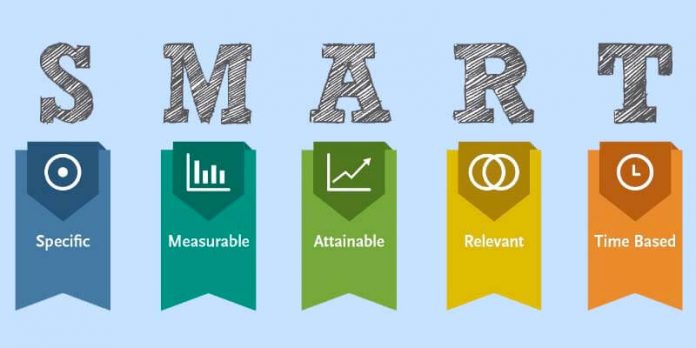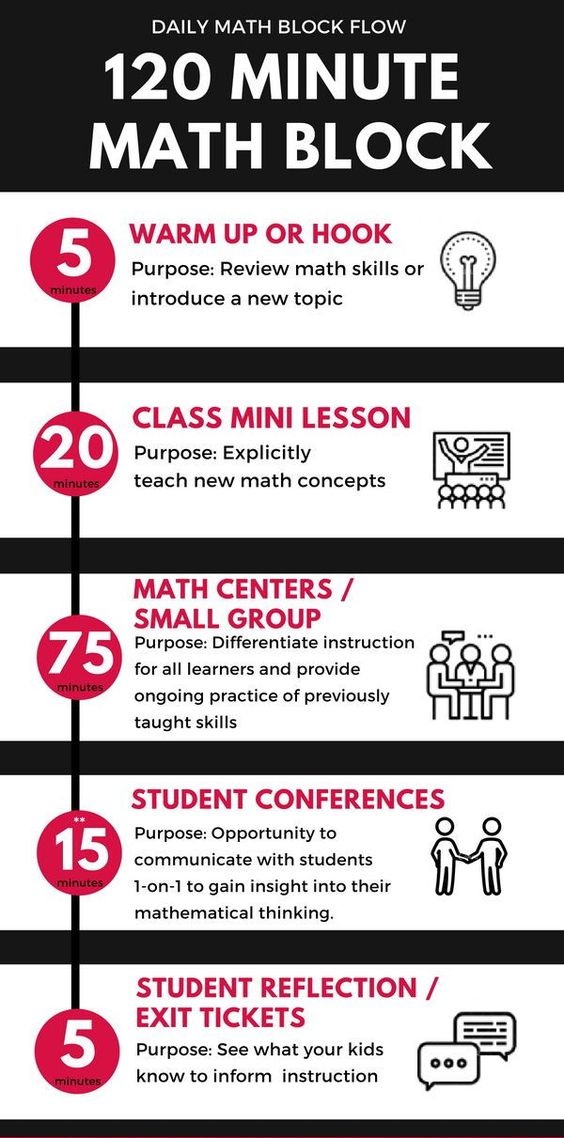- techteam@paatham.in
- best elearning app digital education Digital Learning e-learning education technology Educational software elearning elearning app for school Elearning app in jharkhand learning app in india Learning management learning management software Learning Management System learning portal LMS online education School Management Software school management software india School Management System school management system software Uncategorized
- April 12, 2021
- 1 Comment
Traditional learning relates to any type of training in a regular school setting using classic paper and pencil techniques. In brief, traditional relates to any type of teaching involving techniques typically used in any college. This may include typical instruction-style lecture, tasks and tests, and student homework, classical teaching pedagogy and teacher training, use of assigned textbooks and other course content, and an in-person instruction scheme. Traditional learning continues to be known to most learners today. While most of the components outlined above will be present, topics, textbooks, and some learning styles may differ.
Broadly speaking, e-learning relates to any kind of training that is electronically transmitted, generally over the internet. Think of any kind of educational material you might have consumed on platforms such as YouTube or other streaming sites or internet classes through universities or even virtual classrooms where students and teachers sign up remotely –all of these would count as examples of e-learning. E-learning is an inevitable evolution of the educational ecosystem with the growing ubiquity and fast spread of technology. It can be something as tiny as using electronic materials or something as enormous as massive open online courses that enable anyone to sign up to learn something new, anywhere and at any moment. Due to the many advantages it transfers to all stakeholders in the academic ecosystem, e-learning is increasingly becoming a feature in classrooms across school and institutes in the world.
What are the benefits of e-learning over the traditional education system?
The advantages of including e-learning education system methodologies within the traditional education system or even implementing e-learning options at your school and college are many. Some key benefits of an e-learning education system are discussed in further detail below:
One Time Setup Cost
Many schools and institutes are hesitating to invest in the e-learning education system as they think that it would be too big to bear the price of such an effort. This is mainly due to infrastructure change. While schools and institutes are used to invest in products such as pens and paper, desks and benches, blackboards and classrooms, it makes sense that the cost of setting up an completely fresh teaching scheme must be closely adjusted against the budget of the school or institute. However, with most techniques or instruments in the e-learning education scheme, the price is mainly in the configuration, which is then mitigated over time because of how much it is used. This implies that the price is a one-time price – an investment in the future where there are plenty of yields on such an investment.
Increases Inclusivity for Stakeholders
The system of e-learning education may seem very modern and cutting-edge as it uses the recent technology in the educational ecosystem. This does not imply, however, that it is in any manner beyond the reach of the common person or the exclusionary.Indeed, with the development of low-cost technology and the proliferation of internet connectivity and internet-enabled phones in even the most remote parts of the world, e-learning education system is becoming increasingly feasible in today’s era.This is particularly crucial for marginalized communities that do not usually have access, infrastructure or the funding needed to construct and maintain traditional education systems.E-learning enables anyone with an internet connection and an internet-enabled device to sign up for a classroom that is revolutionary for learners who are often ignored or excluded from traditional learning systems.
Easy to Scale Up
Technology for the e-learning education system is built in such a way that there are continual improvement and development being done on the tools that support it. Whether it is a new version of an app with extra features or just advancing hardware, e-learning education system makes it easy for users to keep up with the times through easy patches or increasingly low-cost devices. This means that whether the school or college is small or large, it does make it easier to scale up to meet the present needs of the school when the e-learning education system has been implemented. Being able to easily update via a patch or software upgrade or having the rare hardware update also end up being cost-effective ensures that schools can scale up easily and stay up to date.
Technology Embracing
In the modern world, the use of technology is becoming ubiquitous. Entire jobs rely on it and there is no industry that has not been affected and embraced technology in some form of the other. It is important for schools and colleges to also prepare their children for this modern world by embracing the use of technology at the very earliest. The easiest and most beneficial way to do this would be through the implementation of e-learning education system, which ensures that students familiarise themselves with the use of various electronic or internet-enabled tools and platforms in their day to day lives, to perform their day to day tasks. Not only do students then become comfortable using technology, but they also understand the systems of thinking that underlie it making them natural learners in an increasingly technology embracing world.
Lowered Overheads and Labor Cost
Think of the endless overheads of running a school or college – from simple things like pens and papers to storage space for all the physical records that need to be maintained. A traditional education system comes with massive overhead costs. E-learning on the other hand naturally eliminates many of these costs, since so many of the tasks and processes take place electronically. From classroom assignments being submitted using school management systems like Paatham to even the elimination of the need for a physical space to call a classroom, e-learning education system drastically reduces overhead costs for all stakeholders in the educational ecosystem.
The same also applies to labor costs with a traditional education system. Many personnel is required to manage the logistical and temporal demands of a traditional classroom setting – from study materials that are physical to the natural restrictions in the number of students that can be fit in a physical classroom. With e-learning education system such restrictions do not apply. Instead, since many tasks and processes are automated, the need for a human agent to perform them is eliminated resulting in downsizing and reduction in labor costs. This kind of reduction in costs is vital for budget-conscious industries such as education since valuable funds can then be redirected towards more worthy causes that would benefit all stakeholders in the educational ecosystem.
Conclusion: Can e-learning replace traditional education systems?
As we move into the future, it is likely that educators and management will continue to take advantage of the many benefits of e-learning systems. However, some classic traditional education system practices will remain. Rather than creating a false dichotomy where one is forced to choose between a traditional education system and e-learning it is more likely that a new form of systemic learning will emerge that is a blend of the two. We are already seeing this in practice – with virtual classrooms becoming a reality thanks to tools like Paatham learning management system that allows for a seamless experience, for teachers to reach students in remote parts of the world, through massive online open courses through services. So while it is unlikely that the traditional education system will ever be completely eradicated, it will continue to evolve to be inclusive of new forms of technology and learning, via the e-learning education system.
There is a nice reason why nowadays software for classroom leadership is so essential. Surely one of the reasons is the whole range of features with which it comes. Naturally, these features make life easy not only for the students, but also for the school administration. It is important for us to discuss the importance of the convenience of the online registration process while discussing the various benefits of the school management system. When new registration begins, the online registration platform for students to enroll becomes imperative. Since everything on the single platform not only accelerates the entire process, it also makes it easy for administrators to track all details in real time.
So here are a few features of online registration using the school management software:
1. Unique ID for all students
Online school software’s beauty is that it provides a unique ID to the student. Once the internet registration process is started, the student will need to fill in the information needed. After successfully completing this step, the school management system will generate a unique student ID that will be needed further down the line for all other communications with the school. The unique ID establishes the fact that the data of the student can not be duplicated. The unique ID also makes it very easy to identify the academic data of a student. The eLearning platforms make it both for the students and the school easier and simpler.
2. Admission management
There is no need to say that the admission process is extremely pivotal. Data management becomes quite unmanageable at various stages. However, it has become incredibly simple with the advent of eLearning and the internet enrolment scheme. Whether it’s managing the registration or monitoring the process, it’s all about classroom leadership software. The software was designed to provide the admission manager with facilities to streamline the registration process.
Students can use this software to inquire about an admission process, fill in the online form, pay online registration fees and also track the application’s current status. The software for school management can configure the different levels of the registration process according to their requirement. The software also allows the school administration to set up the interview schedule auto allocation.
3. More features
More interesting characteristics come with the internet classroom leadership software. The school administration will have the power, apart from the registration, to monitor and verify the amount of enquiries and registrations made. This helps in the process of decision-making where applications are compared, accepted or rejected according to the admission criterion standards. The date also helps them analyze and prepare online application process statistical reports on the schools. In the analysis, the number of inquiries made, registrations made and withdrawals made will help.
Some of the quick features of the school management software include:
Online application form
Capturing application data
Tracking application status
Allocation of seats
Managing documents
Managing offers given out to students
Configuring admission rules
Seamless communication
Automated notifications to applicants
Payment of fees
Registration and enrolment
Scheduling of interview
4. Mobile app
Many colleges are creating mobile applications for learners nowadays. This makes the fee payment method even easier. These days, smartphones are quite prevalent and the parents / guardian or students can pay their charges anytime and anywhere with a mobile application. The mobile applications also help schools give significant notifications about the beginning of the session, tests, interviews and other procedures concerned. Students can obtain data about the admission criterion with the assistance of these mobile apps.
5. It is a completely secured system
Based on the latest technology, the school management system software is designed and developed. The eLearning platforms are using the best and most advanced package to develop a highly secure system that will help secure the students. The information of the student is essential for any college, so it is essential for any school to keep it secure. The system is not only protected by passwords, but biometric locks are also used. Only the school’s authorized staff will have access to vital data. The software’s technicalities make it robust and free of malware.
The benefits of the school management software
The most important benefits of this software are:
Simplified admission and registration process
The software online school helps streamline the entry process for each college. The total system can be tailored to the requirements of the school. The overall system is automated, so nobody has to calculate, arrange or sort information. The school’s authorized person can view the profiles of the students to know the history of the registration. The scheme can process various student profiles simultaneously.
Real-time tracking of applications
Because the software of this school scheme is completely online, it does not involve paper use at all. Without printing any document, the entry process can be monitored online in real time. The scheme enables the college to customize the designs of the form, it is areas of input so that the process of entry is carried out according to the school criterion. As the admission takes place, the authority can track the applications and their count in real time.
It is a better experience for all
While using the online application process, the user will certainly have a better and fulfilling experience. Even payment techniques that use the recent e-commerce technology are simple, robust and fast. The software for classroom leadership offers the flexibility to use multilingual forms for admissions. In schools where regional language is used to communicate with the students, this system can be used. This system definitely reduces costs for both schools and students. It also optimizes resource utilization and speeds up the registration process. The software can also analyze and can therefore assist in the decision to accept and reject proposals.
It can be fully customized
When it comes to the way they operate and the processes and systems they follow, no two schools in the world are exactly the same. Much depends on the school’s size, and that’s why their needs and needs would also be different. Regardless of what it is, the school authority can form the scheme according to your demands with excellent school leadership software. With the help of such systems, all the different stages of the school’s admission process can be changed and modified. The requirements of each stage could be different, and with good school software, the stages can be designed in the best possible way to meet those requirements. In the case of different courses, the school authority can also publish important details such as seats and admission criteria. At the same time, grades can also be brought out–especially in the admission tests–so that students can know whether or not they are likely to be admitted to your school.
Facility to record previous educational details of a student
When a college has a high-class school management system, they become more comfortable in fields such as keeping students ‘ prior educational documents that are new to the organization. It might be that a student has enrolled from the 11th standard at your school–in that case, the school can keep all of that student’s records in their database, especially those of the 10th standard. Similarly, if a student has been there with the school right from the start, the school can have all the records whenever they need them.
Integration
One of the main advantages of systems such as school management software is that they make it really easy to integrate different departments into schools. This means that all school departments have access to other people’s data and can access it as and when they wish. The real hallmark of these schemes can be called this seamless integration of all the school’s distinct weapons. Installing this software becomes imperative for all schools with so many features that are not only helpful but also simple.
High-quality reports
A scheme such as a school management software can produce the very highest quality reports out there. They come with features like charts that help the management of the school get the necessary insights into the students they want in their school and those they don’t. The school can also look at how many seats each section has been allocated and how well the whole system is being used.
Thus, if you wish to manage your admission with a school management software then the best way is to go for Paatham which is simple, easy and very flexible to match up to your expectations.
e-Testing or e-assessments are on-line tests conducted with the aim of evaluating, measuring, and documenting the educational readiness, learning progress, talent acquisition, or academic wants of the test takers. Within the past, test were typically given in paper printouts and had to be two-handed out manually. Nowadays, you can create online test, share the link with your students, and immediately see their results.
e-Testing is a valuable tool in Higher Education for several reasons. it’s large potential benefits for school students in terms of learning and retention of study material, furthermore as increasing their engagement with their chosen topic. e-Testing offers several blessings over traditional pen and paper exams.

e-Testing can
supply immediate and focused feedback on students’ work
allow students more than one attempt at an answer
present questions in a predetermined or random order
be used for diagnostic, formative or summative assessment
guide students to further reading or resources if they are having difficulty
increase students’ digital literacy
increase student engagement
record highly detailed student learning analytics and present them to the teacher in real time
manage teacher workload and corrections
The use of e-Testing makes it much more realistic for students to get this timely and appropriate feedback given the workload already experienced by teaching staff. The feedback given can also be further enhanced by technology as it may contain links to interactive material, additional reading, videos etc. so that students can be directed to engage in self-directed learning tailored for their particular difficulties.
The Digital Roadmap also highlights the need to maximize the potential of data analytics to inform teaching and learning in Higher Education. The use of e-Testing makes this task manageable as most systems would automatically track many learning analytics as students use the system. E-assessment can also be used to great effect to develop greater opportunities for part-time, flexible learning, including lifelong learning.
The use of e-Testing saves students a lot of time and money. Often the assessments can be completed in less time, multiple candidates can complete the online assessment at the same time and there is no need for specialized (and expensive) personnel. Also, the test takers are able to take the assessment during class, or at home, using their own devices. You get to see their results and answers and get instant feedback about your chosen topic. That helps you, as teacher, to learn more about your students and adapt to their needs, strengths and weaknesses.
Not much can be said about the disadvantages of online testiing, since the advantages outweigh them by far. But there might be some, for example, you need to be computer literate (or able to use a computer well) in order to create and take an assessment. Technology is not always reliable, there might be connection or internet problems, energy breaks and other things like that. Also, there’s a cost involved in online assessment softwares.
e-Testing has some pros and cons. It’s up to you to decide what is the best option in your case, that is, keep using hard copy assessments or go for the online option. Although some financial investment in online assessment software is needed, we believe the benefits outweigh the costs by far. It’s a value for money acquisition, since you, as a student, will save a lot of time and money in many other ways.
Also, online test allow the test takers to take on mobile learning, which means, they are able to take the test anywhere, anytime. And they receive their results immediately by email. You can see their results and download them into an Excel file.
A learning system based on formalised teaching but with the help of electronic resources is known as E-learning. While teaching can be based in or out of the classrooms, the use of computers and the Internet forms the major component of E-learning. E-learning can also be termed as a network enabled transfer of skills and knowledge, and the delivery of education is made to a large number of recipients at the same or different times. Earlier, it was not accepted wholeheartedly as it was assumed that this system lacked the human element required in learning.
However, with the rapid progress in technology and the advancement in learning systems, it is now embraced by the masses. The introduction of computers was the basis of this revolution and with the passage of time, as we get hooked to smartphones, tablets, etc, these devices now have an importance place in the classrooms for learning. Books are gradually getting replaced by electronic educational materials like optical discs or pen drives. Knowledge can also be shared via the Internet, which is accessible 24/7, anywhere, anytime.
• No Boundaries, No Restrictions : E-learning, facilitates learning without having to organize when and where everyone who is interested in a course can be present.
• More Fun : Designing a course in a way that makes it interactive and fun through the use of multimedia, enhances not only your engagement factor but also the relative lifetime of the course material in question.
• Cost Effective : E-Learning is always cost friendly.
E-learning has proved to be the best means in the education sector, especially The schools which use E-learning technologies are a step ahead of those which still have the traditional approach towards learning.
No doubt, it is equally important to take forward the concept of non-electronic teaching with the help of books and lectures, but the importance and effectiveness of technology-based learning cannot be taken lightly or ignored completely. It is believed that the human brain can easily remember and relate to what is seen and heard via moving pictures or videos. It has also been found that visuals, apart from holding the attention of the student, are also retained by the brain for longer periods. education sectors, are now adapting to the concept of E-learning which helps in the progress of a nation. Technological advancements also helped educational establishments reduce the costs of distance learning, a saving that would also be passed on to the students – helping bring education to a wider audience.
In this technically knowledgeable era, the fashionable and cool apps rule over the boring study and exams, and students with none doubt, love the ruling app. However, when we combine the two, the result is fashionable as well as a powerful source of effective learning. When we think about combining fashionable technology with boring studies, what we actually mean is the educational mobile app. Undoubtedly, students are more driven towards using a mobile phone for every purpose, and in this situation, the educational app can be the perfect way to attract the students and convince them to study.
With the educational app, the students can get access to any information from anywhere. Therefore, the mobile app Paatham was made with the most interactive and constructive way to attract the students towards studies and enhance their productivity. Let us discuss few benefits of the educational app Paatham.
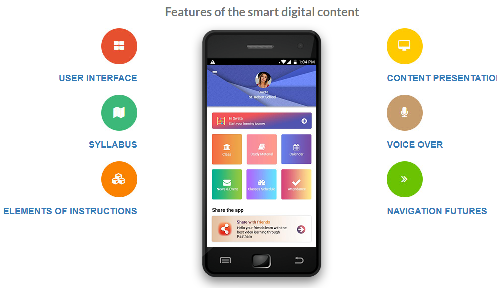
1. Interactive Learning:
Gone are the days, when the sole possibility for the students to read books, was by visiting the library. The innovative gadgets of these days make it simple for the students to practice their lessons in a good and interactive approach. Paatham app is available for all types of students. These apps ensure interactive and effective learning, by changing the boring lessons and helping the students to visualize each and everything.
2. 24/7 availability:
Unlike schools, the mobile app Paatham is accessible round the clock. Therefore, app learning isn’t time-bound learning, rather it’s relaxed learning. We tend to all understand that time-bound learning is not much effective, as children get distracted very easily and don’t seem to concentrate continuously for a long time. Thus, educational apps work the best regarding this issue, as they are available 24/7, and also the students will study as per their convenience.
3. eBooks and on-line study material:
With the advancement of technology and introduction of educational app Paatham students don’t seem to invest their time and money to buy the desired study material from the outlets and libraries. Paatham can facilitate the students who are unable to go to the library on a daily basis, by providing needed study material in precisely some clicks. Paatham also facilitate the readers to discover a range of eBooks with a mere click.
4. Movability
Clearly none of us leave our cell phones at home while going some place. Using app have become a part of the day by day schedule, whether you watch a video on the way to work or play games at lunch, your cell phone is dependably with you. In this way, the app can be the consistent companions for the students, as they obtainable to youngsters anyplace, anytime. With the help of educational app, Paatham learning won’t be confined to the schoolroom alone, because the apps permit pupils to require their learning into their own hands and and that they will study and check themselves at any purpose within the day.
5. Leisure hours usage:
The mobile app learning is one amongst the wisest decisions of utilizing your free time actively. The child’s leisure is utilised to be told one thing new with the help of mobile app, and also the entertainment is warranted, without wasting time by watching the idiot box. The mobile apps prove their value, by utilizing the free time in an viable and helpful way.
6. Individually-focused learning:
A teacher’s role within the student’s life isn’t the least bit questionable, however a teacher cannot focus towards one student solely. He/she sometimes has got to interact with 20-30 pupils throughout every session, and it’s tough to make sure all is engaged and following what’s being tutored. However, once a student utilizes an app, the time they interact with the app is all their own.
7. Track your children’s progress:
With Paatham educational app, you can track your children’s progress, that is one in all the foremost necessary things that each parent needs to explore. It is easy for the parents to track their child’s overall or individual subject progress and guide them accordingly, with the help of the mobile app Paatham.
The above-mentioned benefits are enough to prove the value of the educational app, Paatham but the app have a lot more to offer. Without any doubt, technology has helped a lot to create a worldwide platform for education furthermore as helped to spot the hidden skills and abilities of the students. Thus, educational app Paatham, contribute within the learning process and can reshape the long run of education.
Every year, an increasing number of organizations use eLearning to deliver more of their training. As eLearning tools evolve, they continue to offer more functionality at a lower cost, making eLearning an increasingly attractive alternative or complement to traditional training methods.
Still, eLearning is not always the best option. There are times when live instructors are needed, either in person or via web meeting. Consider these seven key questions when deciding what role eLearning should play in your next training initiative.
1. What Kind of Instructional Content Am I Looking to Implement?
While eLearning has the potential to be a particularly powerful training tool, its effectiveness depends on the job you have in mind. Before deciding on a training format, it is important that you consider what skills you are training, and how you want your employees to use those skills in their jobs. The following content types work especially well with the strengths of the online training format.
• Software Training and Web Applications
• Certification and Compliance Training
• Company Policy and Procedure Training
Others?
Basic soft skills, such as sales processes, product knowledge, and quality standards, can all be taught using eLearning. Generally, eLearning for these skills is best used as part of a comprehensive blended learning program.
Travel costs can be all but eliminated.
While classroom training programs often require a significant amount of travel – both for trainers and trainees – eLearning by its very nature is travel-free. All that’s needed is an internet connection.
Training is more consistent from location to location.
eLearning can eliminate the variance in content delivery that is common when multiple instructors are employed to deliver training over a broad geographic spectrum. Different instructors tend to highlight different points based on their own experience. Unless they are heavily scripted, this creates inconsistent training experiences among your learners. eLearning provides consistency and ensures that your learners are sharing a common training experience with a consistent message being delivered.
What is the Geographic Distribution of the students?
When you have a geographically diverse audience and are committed to instructor led training exclusively, you are stuck with two choices: bring the instructor to the learners or bring the learners to the instructor. Both choices come loaded with a whole bucket of potential scheduling issues that may result in your learners not getting the training they need, when they need it.
A widely disbursed workforce can be a major hassle for training managers, and one for which classroom training is especially poorly suited. eLearning provides a solution that can provide significant cost savings, while delivering a more uniform and predictable training result.
1. eLearning courses can be accessed any time, from any location, allowing employees to take training when and where it works best with their schedules.
2. eLearning allows the trainees to learn at their own pace, increasing understanding of the material and speeding the process.
3. What Sort of Technology Investment Will I Need To Make?
4. Can eLearning Be Used in Conjunction With the Classroom Training We Currently Use?
5. Am I Prepared to Make eLearning a Success?
6. The Bottom Line: How Can I Assess the eLearning ROI?
In a world of tightened budgets and continual cost-cutting drives, new systems need to prove their own worth. While there are some easy to measure hard-cost savings associated with eLearning (like less travel, fewer trainers, less work-interruption, etc.), the greatest benefit often comes from soft- savings. Unfortunately, measuring just exactly how much you’re saving can be tricky. Here are a few suggestions:
• Start by figuring out what your company’s definition of “success” is when it comes to training.
• Identify the soft-savings you’re trying to measure.
• Assess your eLearning system’s effectiveness through a controlled test.
There will always be a place and need for instructor led training. Nothing in the digital world can truly replace the adaptive give and take afforded by the classroom. But, there are many opportunities for smart managers to leverage eLearning in order to save time and money while still getting your learners the quality training they need.
Depending on how much time you have for guided math, find ideas on how to schedule your daily math block to include key components for success.
Ever wonder what your daily math block should look like?
A well designed math block incorporates whole group and small group instruction. It also provides time for teaching new skills, practicing for mastery and reviewing previously taught skills.
However, there are two things I want you to keep in mind. The ideal and the real. And I’m going to share both.
First, let me share what an ideal elementary math block looks like. When I say ideal, I’m talking about a math block that is 75 minutes or longer.
Warm Up Activity For Books
Purpose: (1) Review math skills or (2) Introduce a new topic
Any good lesson starts out with an engaging opening. Math is no exception.
This section of your math block should be fast paced. This is either the time for a quick review or a way to interest your kids in a brand new topic. Remember, you want to spend the bulk of your time in centers so that you can work with your teacher led small group.
Here are some examples of things you can do during your warm up:
• Number Talks
• Calendar Activities
• Problem of the Day
• Number of the Day
• Kinesthetic Math Activities
• Number Sense Routines
Whole Class Mini-Lesson
This is the part of your daily math block when you are teaching a mini-lesson. You’re teaching and modeling new concepts by using think-alouds and clear visual models.
It’s also the time to do guided practice. Set aside a short amount time for students to actually practice what you’re modeling. This can look many different ways: interactive large group activities, partner work, etc.
Be strategic. Stay focused on the topic. Otherwise you may find yourself going down a rabbit hole and then not having enough time for math centers.
Here are some examples of things you can do during your whole group mini-lesson:
• Math Read-Aloud
• Hands-On Activities with Manipulatives
• Partner Work
• Group Activities
Teacher Tip – Since this is a “mini-lesson” after you explicitly model you may not get to guided practice on the same day. That’s OK! You can do guided practice the next day. The important part is to make sure you are modeling AND then providing support.
Math Centers and Teacher Led Small Group
Purpose: (1) Differentiate instruction for all learners and (2) provide ongoing practice and review of previously taught skills
There are 2 different things going on during this portion of your math block.
Math Centers – Students practice and review math skills in small groups or pairs, without teacher support (You’ll be at working with your small group).
Examples of math centers can include:
• Math Games
• Journals
• Task Cards
• Fluency Activities
• Problem Solving Tasks
• Math Sorts
Teacher Lead Small Group – This is my favorite part of the block! While the rest of your class is working in centers, you’re targeting instruction with a small group of your students in order to meet their needs.
It’s that magic time of the math block because you get to see and correct misconceptions up close. This is where you get to move your students.
You’re finished with your last teacher led small group and the rest of your students are cleaning up their stations.
Now, what?
It’s time for your kids to show what they know. Let’s move to the last part of an ideal daily math block. Time to assess.
Student Reflection
Purpose: (1) See what your kids know and (2) Inform instruction
This is the time to do a quick check of the day’s learning. It’s not a formal test.
What about if you only have 45 minutes?
This definitely isn’t ideal. But let’s keep it real, I know that some of you only have 45 minutes. The first thing, I strongly suggest that you advocate for more time for math.
With that out the way let’s get real creative.
In this scenario, I suggest keeping both the warm up and the reflection time 5 minutes each. This will leave you with 35 minutes each day for alternating teaching a whole group lesson OR doing math centers. See example below:
Monday: Warm Up (5 min.) – Whole Group (35 min.) – Reflection (5 min.)
Tuesday: Warm Up (5 min.) – Math Centers (35 min./2 groups) – Reflection (5 min.)
Then continue the pattern for the other days of the week.
Proper attendance management is crucial for the success of any academic institution. Many researches reveal that poor attendance is affecting the quality of education. Schools are not able to meet the expectations of parents because of the disorganized manual attendance management system.
Schools should give much emphasis on student attendance in order to improve the overall academic performance of students. To assist them in this issue, they can avail the help of an online student management system.
Attendance management helps in many ways:
Enhanced Course Management : As you know, teaching is a continuous process. Therefore, each day’s lessons are scheduled as the continuation of the topics that you taught your students the previous day. Regular absentees may leave an avoidable burden for the teachers. You may have to repeat the same topics for irregular students, thus taking extra time.
Repeating the same topics may prevent you from achieving your lesson plan goals. Tracking student attendance on a daily basis will help to you keep an eye on irregular students. You can easily meet your lesson plan goals with the help of attendance management systems.
Better Overall School Result : It’s obvious that only regular students will achieve excellent grades in a school. Irregular students cannot compete with your regular students, no matter whatever effort they take. Such kind of students would do badly in their exams and affect the overall results of your school. Completely automated attendance management software will help you to track your students’ progress in a systematic manner.
Good Attendance Stimulates Good Behaviour : Does attendance affect student behaviour? Of course, yes. Regular attendance can nurture good behaviour in students. This will motivate them to behave in a responsible way as well.
Assuring student safety : We are at a juncture of time where student safety is so much important. With a full-fledged attendance management system parents will be informed about the day to day attendance of their child via automated messages. If there is any doubt parents can even go through the attendance sheet online.
Considerable productivity increase : Attendance related activities are usually carried out manually which takes sizeable amount of time of the teachers. If a school has an attendance management system it will carry out all the attendance related calculation within no time, Thus saving a huge amount of time which can be put to another use.
Burden on Teachers Can be Minimized : As we discussed earlier, managing the needs of irregular students is hectic and time consuming as well. Teachers have to reteach the topics for the absentees in order to make them competitive with the regular students. Unfortunately, this process needs time and energy of your teachers and as a result will become a burden for them.
Improved Parent Teacher Communication : There is no doubt that better parent- teacher communication, influence students’ academic success. By installing a quality student attendance management system you are creating a chance to reach out to parents. If a parent come to know that his\ her children is bunking academic sessions, definitely he\she may contact the teachers. This will give you an opportunity to improve the academic performance of irregular students.
HOW TO CHOOSE A STUDENT ATTENDANCE MANAGEMENT SYSTEM?
Student Attendance management system should offer following features:
• Compatability
• Attendance reports
• User-friendly interface
• Leave management
• Notifications
• Good software support
• Regular updates
When you are learning a new skill, do you do it perfectly the very first time? Do you know all the answers before you even begin? Of course not! The same is true of math. Learning math requires practice, and making mistakes is part of the process. But as I’ve shared before, making mistakes in math is a good thing, and can help kids learn and understand more deeply. Today I want to dive a little deeper, because all mistakes are not equal. There are different types of math errors that students make, and understanding how to prevent them and how to learn from them is essential.
3 Types of Math Errors:
As I’ve thought about the different mistakes students of all ages make as they solve math problems, I’ve narrowed them down to 3 categories:
• Careless Errors
• Computational Errors
• Conceptual Errors
Careless Errors:
Careless errors occur simply because they are not paying attention, or are working too fast. Some examples might be:
• Copying the problem wrong to begin with
• Writing a wrong number
• Dropping a negative sign
• Sloppy handwriting
• Not following the directions
• Typing it wrong into their calculator
Here are some simple ways to help kids prevent making careless mistakes:
• Slow down
This seems obvious, but students are often in a rush to finish so that they can move on to something else. Rushing is the easiest way to ensure careless mistakes. Encourage kids to take it slow and pay attention to what they’re doing.
• Circle important information
Whether it’s a worksheet or word problems, circling important information will help students know what to do. Circling something in the directions will help them follow them correctly. Circling key information in a word problem will help them think through their strategy and make sure they don’t forget anything.
• Use graph paper
Using a sheet of graph paper to work out problems can be a really simple fix for kids who struggle with neatness. Graph paper allows kids to line up the numbers correctly and prevent sloppy mix ups.
Computational Errors:
The second type of mistake is computational. This means somewhere in the process they incorrectly added, subtracted, multiplied or divided.
Making one computational mistake in a multi-step problem means the rest of their work will be wrong and the final solution wrong.
As a classroom teacher, I always required students to show all their steps because if they used the correct procedure and showed me that they understood the concept, I was not too concerned about a small computational error.
Yes, that may have meant the “whole problem” was wrong, but to me, the final solution is not as important as understanding the concept and the process.
Still, we never want to encourage carelessness in computation.
Here are some ways to help students prevent computational errors:
• Slow down
• Check the answer after solving
• Use a calculator
Conceptual Errors:
Conceptual errors occur because kids have misunderstood the underlying concepts or have used incorrect logic. This is the most difficult type of error to identify at first glance. This is also the most difficult type of error for students to recognize, but it is the most important to catch and correct.
When students make conceptual errors, it’s possible that all the math computations are correct. If they’ve misunderstood a concept and thus used an incorrect method to solve, they can work out each step meticulously and correctly but still get the wrong answer.
Ways to prevent and correct conceptual errors:
Obviously preventing conceptual errors is not as easy or straightforward as careless or computational errors. And of course, all students will have varying degrees of understanding, and will struggle with different concepts
But here are a few things you can do to try and encourage conceptual understanding and prevent future conceptual mistakes.
• Introduce concepts in hands-on, conceptual ways
• Teach a concept more than one way
• Have math talks
• Use math journals

